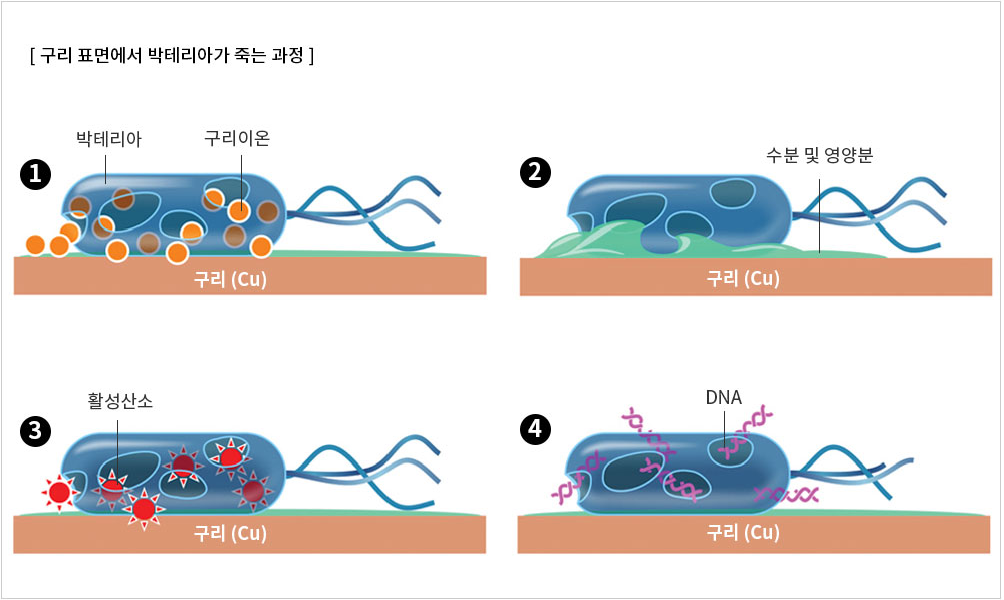How does copper kill viruses?
Copper sterilization effect, our ancestors knew for a long time.
It has been known for a long time that copper is effective in bactericidal and antiviral properties. Ancient Egyptian papyrus records mention that copper was used to sterilize drinking water and disinfect wounds. Even in ancient Persia, there was a law requiring drinking water to be stored in copper bowls.
Hippocrates, the father of Western medicine, already recommended the use of copper for leg ulcers caused by varicose veins around 400 BC. The ancient Greeks, Romans, and Aztecs also used copper for public health and healing.
Amazing Benefits of Water Stored in Copper Containers.
In fact, a 2012 study published in the Journal of Health, Population and Nutrition found that holding contaminated water in copper containers at room temperature for up to 16 hours significantly reduced harmful microorganisms, and the researchers found that "copper is a It is expected as a solution.”
And a further study by researchers at the University of South Carolina found that "on the surfaces of antimicrobial copper products in intensive care units, they killed 97% of bacteria that could cause nosocomial infections, and eventually reduced the risk of infection by 40%. showed." This study was conducted in a hospital intensive care unit. The study found that rooms with copper products had less than half the infection rate than rooms without copper.
How does copper kill bacteria?
The principle that copper kills microorganisms such as bacteria and viruses is said to be due to the oligodynamic effect. Micro-activation is also called micro-bactericidal action, and it refers to the eradication of micro-organisms by disturbing the metabolism of micro-organisms with trace amounts of copper ions. Bacteria on the copper surface recognize the copper binary as an essential nutrient and absorb it into the cells. However, the absorbed copper ions puncture the cell membrane and the bacteria lose nutrients and water. When these ions draw active oxygen through the cell membrane pores, it is said that the bacteria are completely killed.

According to the LG Sangnam Library, the process by which copper catches viruses is similar. There are many scientific studies demonstrating the antiviral effect of copper against the flu influenza virus, norovirus, the main culprit of winter food poisoning, as well as the human coronavirus.
Corona virus dies within 30 minutes on copper surface
According to research results published in mBio, an American microchemical journal by researchers at the University of Southampton in the UK in 2015, the human coronavirus (229E) survived for at least 5 days on surfaces such as ceramic tiles, glass, rubber, and stainless steel, but copper On the 'antibacterial copper' surface, including copper alloy, the human coronavirus was rapidly inactivated and killed within 30 minutes.

Similar results were found in Korea as well. In 2010, the medical staff of Asan Medical Center in Seoul conducted an antiviral clinical trial of copper in collaboration with the International Copper Association and LS Nikko Copper Smelting for 6 months. It was an experiment to investigate the number of bacteria and bacteria in a hospital with high patient contact by replacing the materials such as door soap handles, linker stands, faucets, and bed handles from plastic and stainless steel to copper. According to an official from the experiment, "The results of the study at the time demonstrated the sterilizing function of copper and the prevention of secondary infection in hospitals." A related paper has also been published.
As such, copper has been widely used in various ways to protect our health and improve our quality of life, including antibacterial, for a long time since our ancestors. So, in the next part, we will look at how the advantages of copper combine in textile products (Copper fiber - clothes, towels, masks, etc.)
<Source - LG Sangnam Library, Money Today newspaper article, Voltlon website>





-20230321012125.png)

Comments: 0